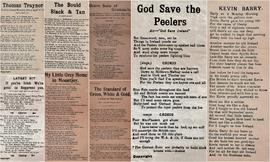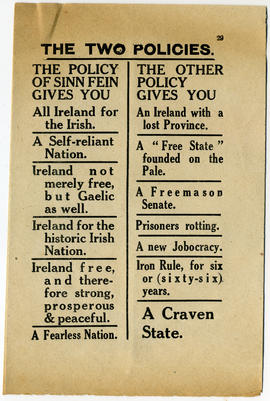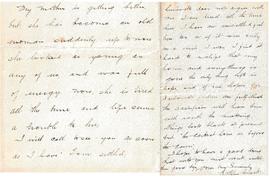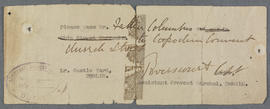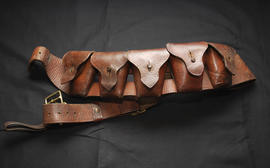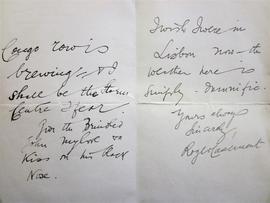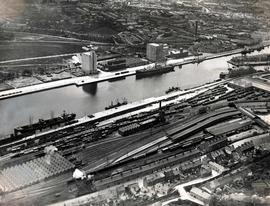- IE CA IR-1/7/1/28
- Dossier
- 1921
Fait partie de Irish Capuchin Archives
A collection of street ballad leaflets assembled by Fr. Stanislaus Kavanagh OFM Cap. (1876-1965), a Capuchin friar, in 1921. The handbills relate to events in the War of Independence from 1919-21. This contentious period produced its share of controversial literature mainly in the form of leaflets, handbills, ballads and other forms of popular street literature. The treatment of prisoners during the War of Independence was the subject of political and social outrage and was reflected in popular ballads celebrating the lives of Kevin Barry, Patrick Moran, Thomas Traynor and other republican prisoners executed in Mountjoy Jail in Dublin and in other locations following courts martial from 1920-1. Most of the ballads recounted popular stories told in simple metre, and set to (mostly) traditional airs. The ballad titles include:
'Kevin Barry'
'The Bould Black & Tan'
'God Save the Peelers'
'Commandant McKeown'
'My Little Grey Home in Mountjoy'
'Thomas Traynor / Died for Ireland / Mountjoy Prison / April 26 '21'
'Brave sons of Granuaile'
'The Standard of Green, White & Gold / A Song of Truce'
'Latest Hit / If you're Irish We're goin' to Suppress you'



